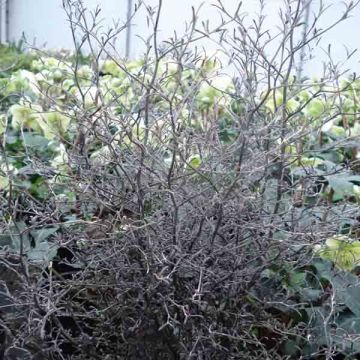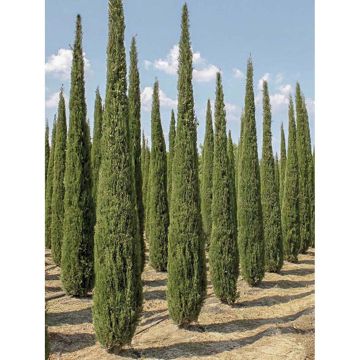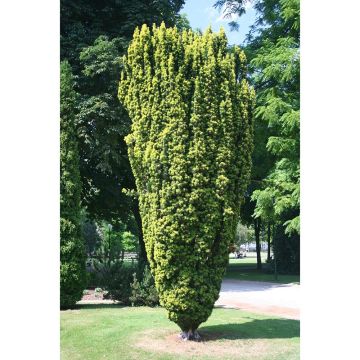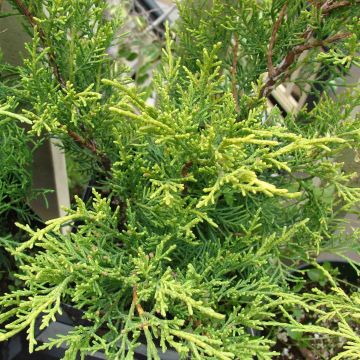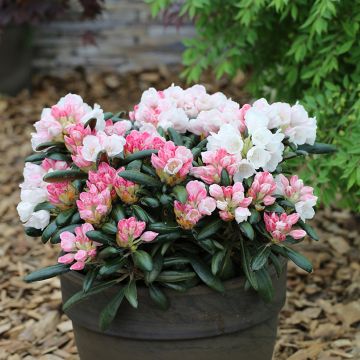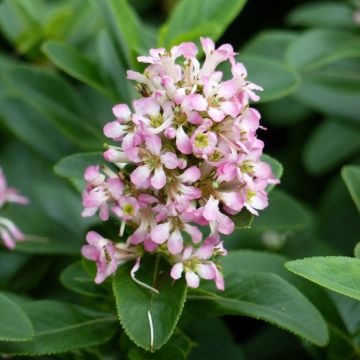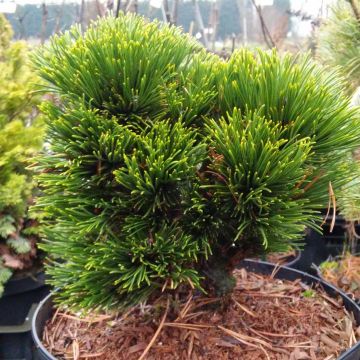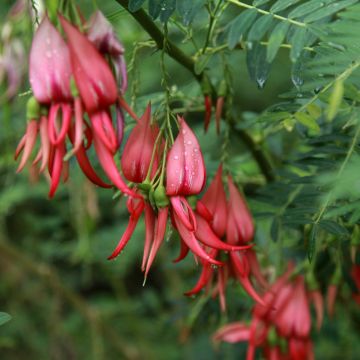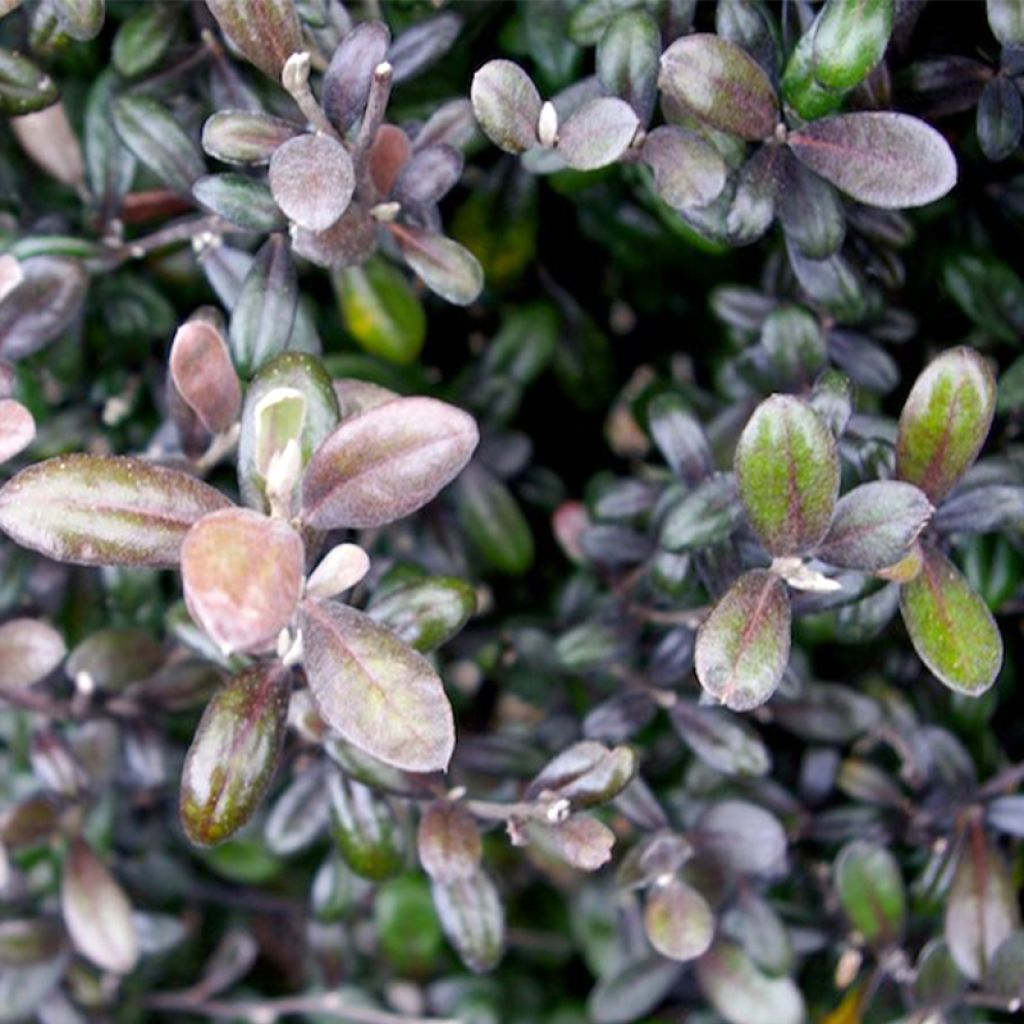

Corokia virgata Frosted chocolate
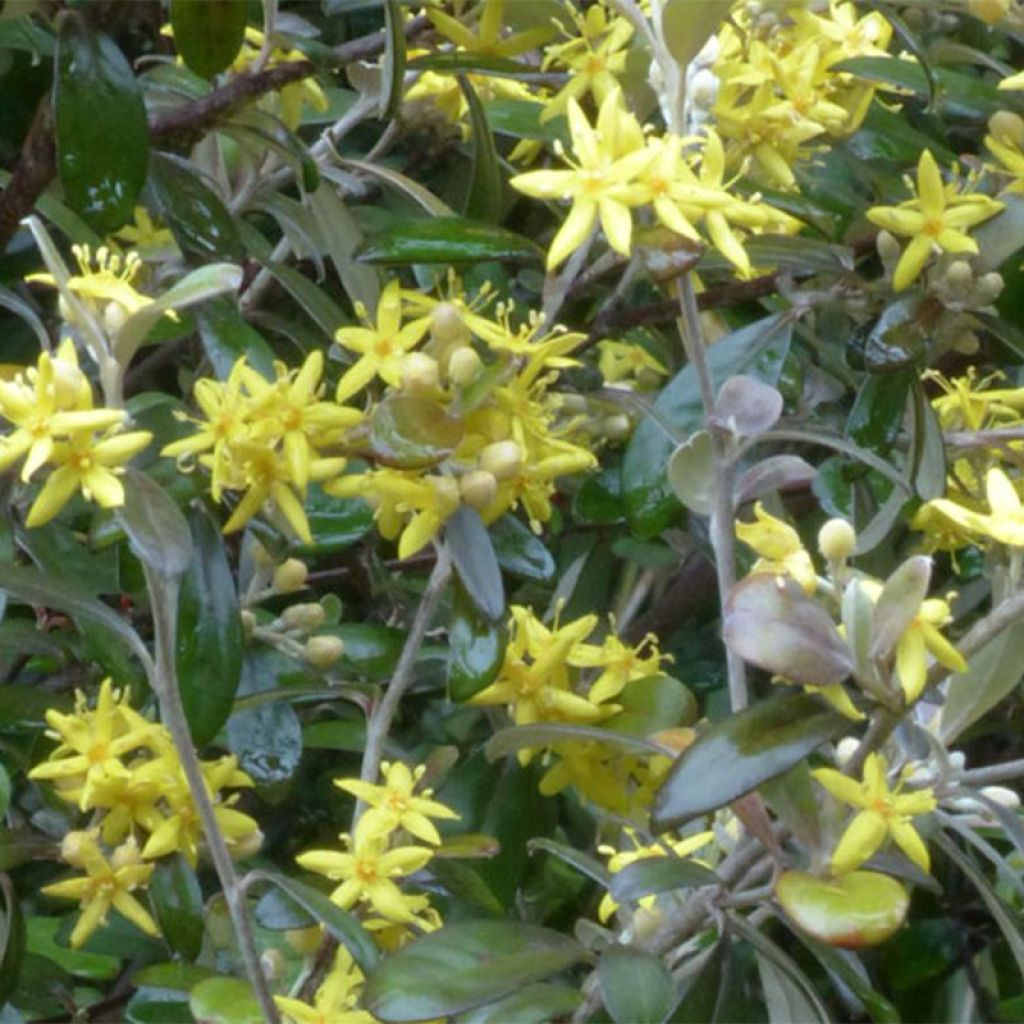

Corokia virgata Frosted chocolate
Corokia virgata Frosted chocolate
Corokia x virgata Frosted chocolate
wire-netting bush
This item cannot be shipped to the selected country
Delivery charge from €5.90
More information
Schedule delivery date,
and select date in basket
This plant carries a 24 months recovery warranty
More information
We guarantee the quality of our plants for a full growing cycle, and will replace at our expense any plant that fails to recover under normal climatic and planting conditions.
From €5.90 for pickup delivery and €6.90 for home delivery
Express home delivery from €8.90.
Does this plant fit my garden?
Set up your Plantfit profile →
Description
Corokia x virgata Frosted Chocolate is a very beautifully coloured version of a little-known New Zealand bush, locally called 'zigzag bush' due to the tangled appearance of its branches. It has small, shiny, green-purple leaves that develop a beautiful patina of bronze to frosted chocolate in winter, and in spring it is covered with small pale yellow star-shaped flowers that are pleasantly fragrant and attractive to bees. In coastal gardens, the corokia x virgata thrives in flowering hedges, exposed to sea spray. Moderately hardy, it is best planted in a pot that can be protected from severe frost in colder regions.
Corokia x virgata Frosted Chocolate belongs to the Argophyllaceae or Corokiaceae family, depending on the classification. Its ancestor is native to New Zealand and is a spontaneous hybrid between Corokia cotoneaster and C. buddleioides. 'Frosted Chocolate' is a bushy shrub with fairly dense, slender, and angular branches that become blackish with age. It reaches about 2m (6 ft 7 in) in height and 1.50m (4 ft 11 in) in width, depending on growing conditions. Its foliage is dense and evergreen and consists of small oval and elongated leaves, measuring 2 to 4cm (0.8 to 1.6 in) long. The leaves are a shiny purple-green which becomes more or less brown to bronze in cold weather, with a white felted underside. Flowering occurs in May. It produces small fragrant, star-shaped flowers with five pale yellow petals, measuring 1 to 2cm (0.4 to 0.8 in) in diameter, appearing either solitary or clustered in groups of four in the axils of the leaves. Once pollinated by insects, these flowers give way to small globular fruits that turn orangish-red in autumn when ripe. Corokia Frosted Chocolate is not very hardy and will perish below -7°C. However, this bush adapts to a wide range of soils, even poor and slightly chalky ones, and it is easy to grow both in the ground and in pots. In a coastal garden, it can be planted in an informal or trimmed hedge, or in a large shrub bed. The Corokia virgata also makes a beautiful specimen to be placed alone, appreciated for its unusual appearance in winter. To accompany it, you can choose, for example, an evergreen Ceanothus Puget Blue, an Olearia scillonensis, or a Leptospermum Martini.
Report an error about the product description
Corokia virgata Frosted chocolate in pictures


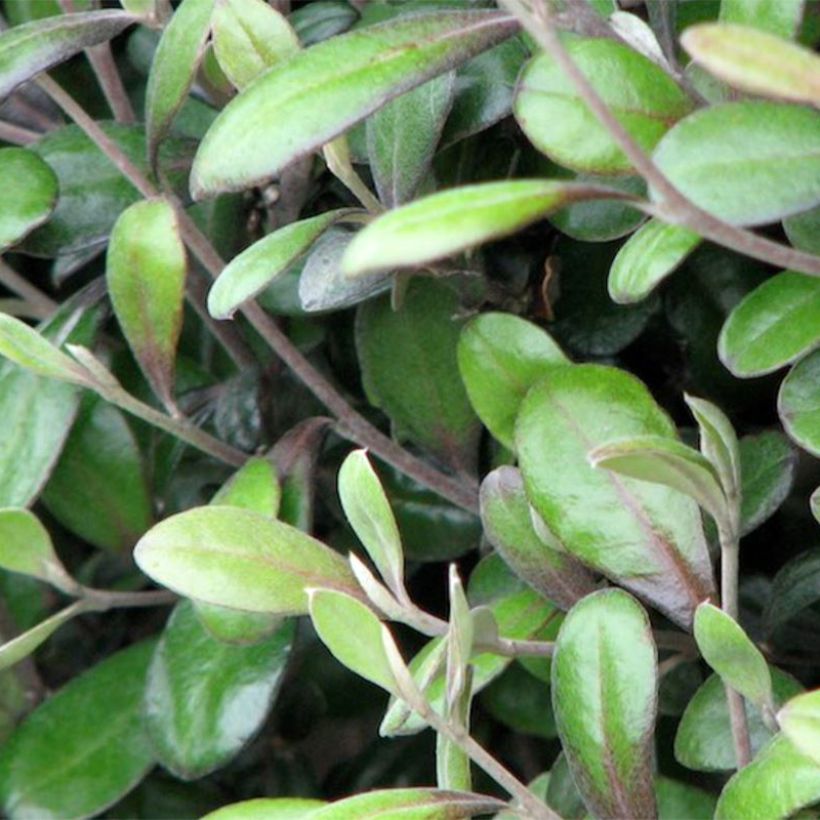

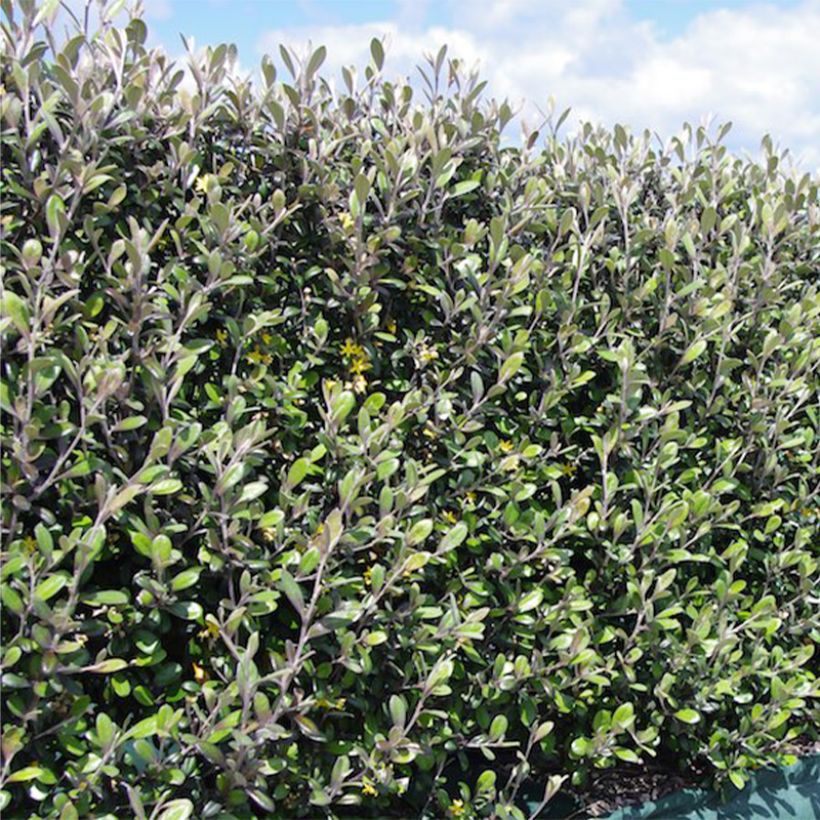

Plant habit
Flowering
Foliage
Botanical data
Corokia
x virgata
Frosted chocolate
Argophyllaceae
wire-netting bush
Cultivar or hybrid
Other Corokia
Planting and care
Corokia x virgata Frosted Chocolate prefers to be exposed to the sun and sheltered from cold drying winds, but it can also be planted in partial shade. Plant in fertile and light soil, rather moist to dry in summer, very well drained. It is a fairly easy plant that tolerates some limestone and poor soils. Its drought resistance is quite good, but it will require some watering in summer in the driest regions. Under a fairly mild maritime climate, this bush can be planted in an open location, either individually or as a hedge. Lightly prune awkward stems to maintain symmetry. A severe pruning can be done if necessary to limit growth. To prevent damage from the cold in winter, protect the bushes by covering the ground around the trunk with straw or dry leaves.
Cultivation in pots is possible, using a mixture of potting soil, coarse sand, and fine garden soil. Use a large pot with drainage holes at the bottom and create a layer of clay pebbles or pot shards to facilitate drainage and water flow. Water regularly. Shelter your potted plant in winter in a bright, but unheated room and reduce watering.
Planting period
Intended location
Care
This item has not been reviewed yet - be the first to leave a review about it.
Evergreen shrubs
Haven't found what you were looking for?
Hardiness is the lowest winter temperature a plant can endure without suffering serious damage or even dying. However, hardiness is affected by location (a sheltered area, such as a patio), protection (winter cover) and soil type (hardiness is improved by well-drained soil).

Photo Sharing Terms & Conditions
In order to encourage gardeners to interact and share their experiences, Promesse de fleurs offers various media enabling content to be uploaded onto its Site - in particular via the ‘Photo sharing’ module.
The User agrees to refrain from:
- Posting any content that is illegal, prejudicial, insulting, racist, inciteful to hatred, revisionist, contrary to public decency, that infringes on privacy or on the privacy rights of third parties, in particular the publicity rights of persons and goods, intellectual property rights, or the right to privacy.
- Submitting content on behalf of a third party;
- Impersonate the identity of a third party and/or publish any personal information about a third party;
In general, the User undertakes to refrain from any unethical behaviour.
All Content (in particular text, comments, files, images, photos, videos, creative works, etc.), which may be subject to property or intellectual property rights, image or other private rights, shall remain the property of the User, subject to the limited rights granted by the terms of the licence granted by Promesse de fleurs as stated below. Users are at liberty to publish or not to publish such Content on the Site, notably via the ‘Photo Sharing’ facility, and accept that this Content shall be made public and freely accessible, notably on the Internet.
Users further acknowledge, undertake to have ,and guarantee that they hold all necessary rights and permissions to publish such material on the Site, in particular with regard to the legislation in force pertaining to any privacy, property, intellectual property, image, or contractual rights, or rights of any other nature. By publishing such Content on the Site, Users acknowledge accepting full liability as publishers of the Content within the meaning of the law, and grant Promesse de fleurs, free of charge, an inclusive, worldwide licence for the said Content for the entire duration of its publication, including all reproduction, representation, up/downloading, displaying, performing, transmission, and storage rights.
Users also grant permission for their name to be linked to the Content and accept that this link may not always be made available.
By engaging in posting material, Users consent to their Content becoming automatically accessible on the Internet, in particular on other sites and/or blogs and/or web pages of the Promesse de fleurs site, including in particular social pages and the Promesse de fleurs catalogue.
Users may secure the removal of entrusted content free of charge by issuing a simple request via our contact form.
The flowering period indicated on our website applies to countries and regions located in USDA zone 8 (France, the United Kingdom, Ireland, the Netherlands, etc.)
It will vary according to where you live:
- In zones 9 to 10 (Italy, Spain, Greece, etc.), flowering will occur about 2 to 4 weeks earlier.
- In zones 6 to 7 (Germany, Poland, Slovenia, and lower mountainous regions), flowering will be delayed by 2 to 3 weeks.
- In zone 5 (Central Europe, Scandinavia), blooming will be delayed by 3 to 5 weeks.
In temperate climates, pruning of spring-flowering shrubs (forsythia, spireas, etc.) should be done just after flowering.
Pruning of summer-flowering shrubs (Indian Lilac, Perovskia, etc.) can be done in winter or spring.
In cold regions as well as with frost-sensitive plants, avoid pruning too early when severe frosts may still occur.
The planting period indicated on our website applies to countries and regions located in USDA zone 8 (France, United Kingdom, Ireland, Netherlands).
It will vary according to where you live:
- In Mediterranean zones (Marseille, Madrid, Milan, etc.), autumn and winter are the best planting periods.
- In continental zones (Strasbourg, Munich, Vienna, etc.), delay planting by 2 to 3 weeks in spring and bring it forward by 2 to 4 weeks in autumn.
- In mountainous regions (the Alps, Pyrenees, Carpathians, etc.), it is best to plant in late spring (May-June) or late summer (August-September).
The harvesting period indicated on our website applies to countries and regions in USDA zone 8 (France, England, Ireland, the Netherlands).
In colder areas (Scandinavia, Poland, Austria...) fruit and vegetable harvests are likely to be delayed by 3-4 weeks.
In warmer areas (Italy, Spain, Greece, etc.), harvesting will probably take place earlier, depending on weather conditions.
The sowing periods indicated on our website apply to countries and regions within USDA Zone 8 (France, UK, Ireland, Netherlands).
In colder areas (Scandinavia, Poland, Austria...), delay any outdoor sowing by 3-4 weeks, or sow under glass.
In warmer climes (Italy, Spain, Greece, etc.), bring outdoor sowing forward by a few weeks.

































